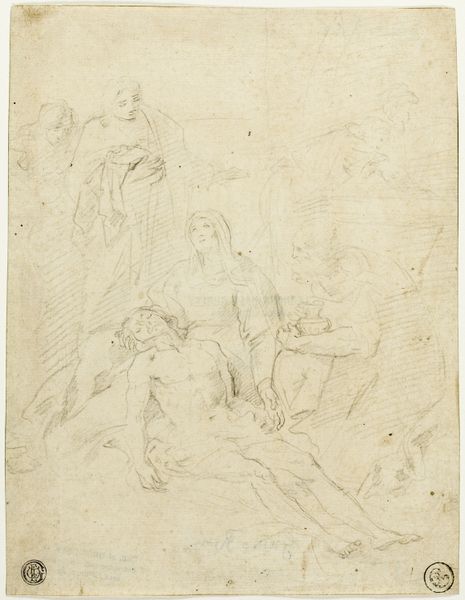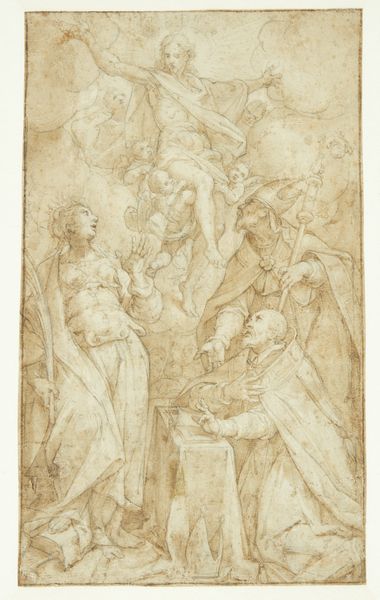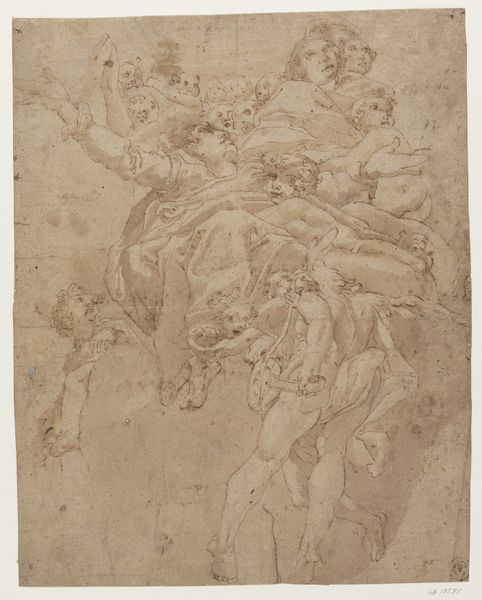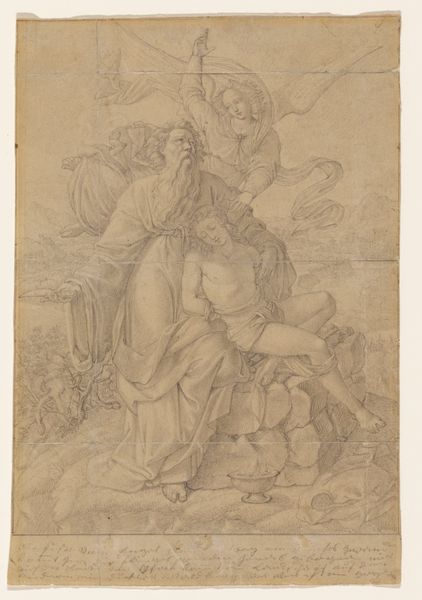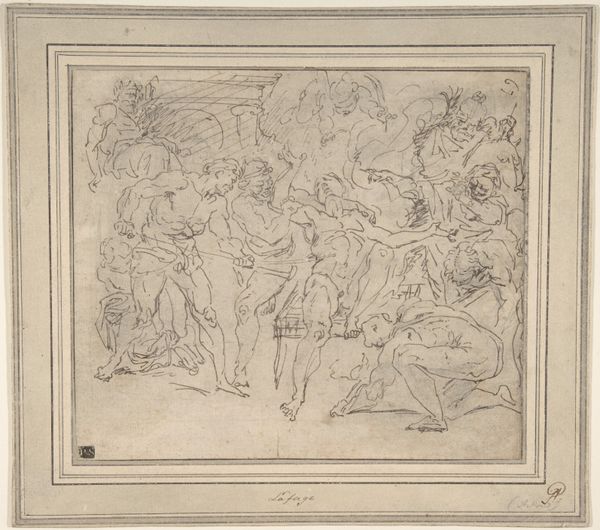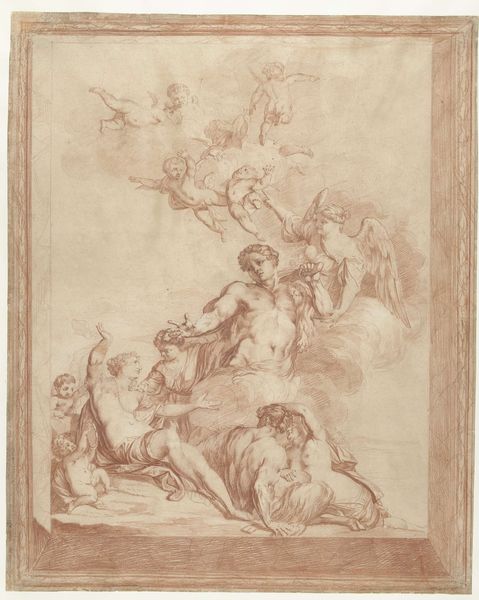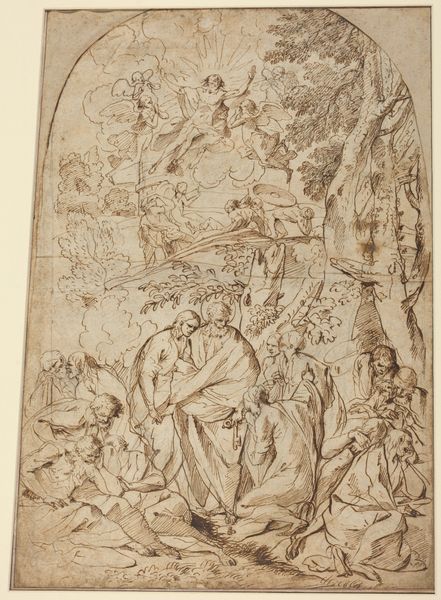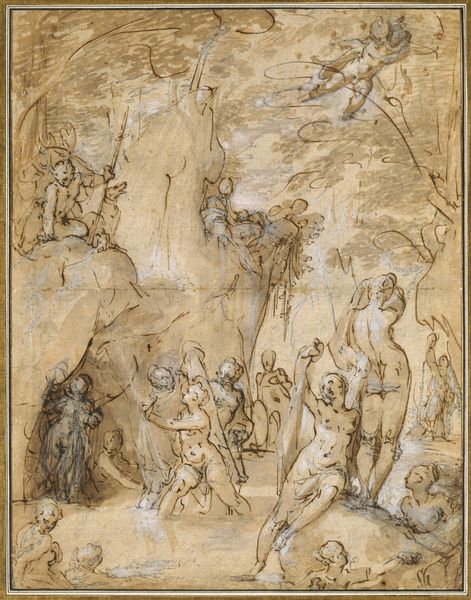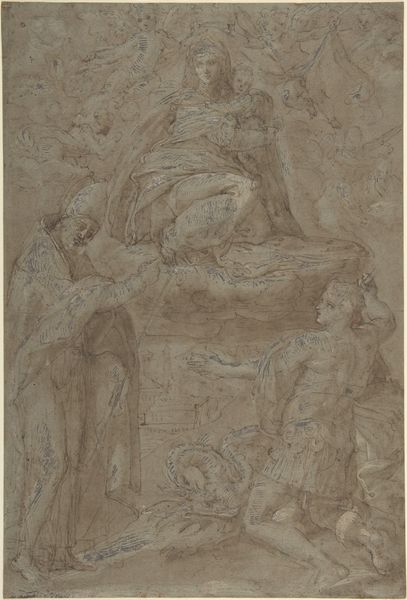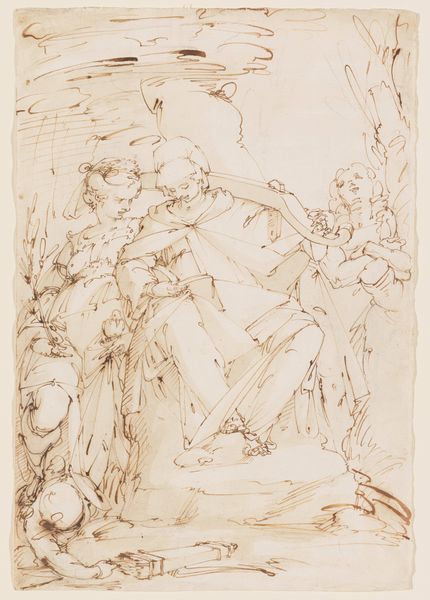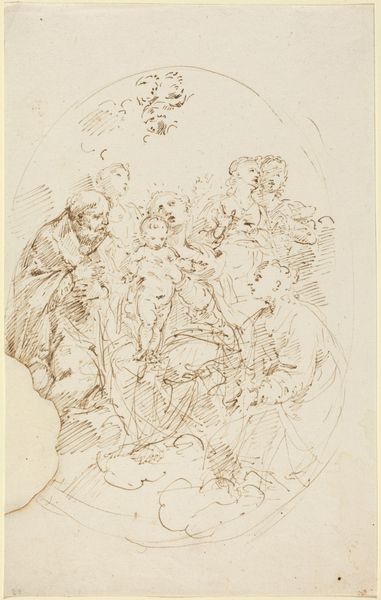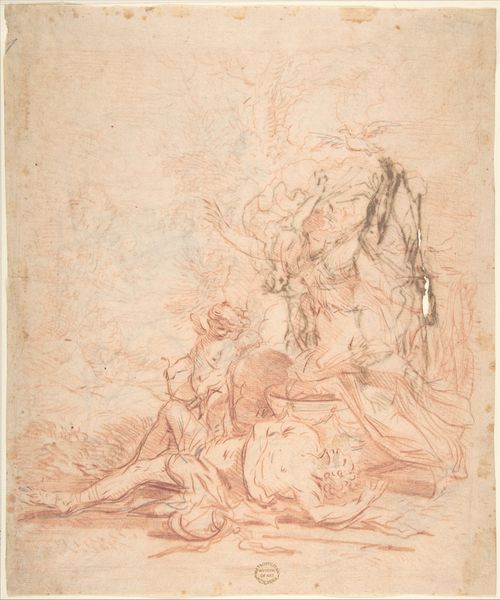
Allegorical Figures on Mount Parnassus: Study for the etching Triumph of Painting 1612 - 1650
0:00
0:00
drawing, print, etching, paper, ink
#
drawing
#
allegory
#
baroque
#
ink painting
# print
#
etching
#
etching
#
figuration
#
paper
#
11_renaissance
#
ink
#
history-painting
#
italian-renaissance
#
nude
Dimensions: 13-1/4 x 9-7/16 in. (33.7 x 24 cm)
Copyright: Public Domain
Editor: Here we have Pietro Testa's "Allegorical Figures on Mount Parnassus," a drawing made sometime between 1612 and 1650, and now held at the Metropolitan Museum of Art. The ink and paper create a delicate, almost dreamlike quality. There's a real sense of classical drama but in a very loose, sketch-like form. How do you interpret this work and its layers of imagery? Curator: Testa has woven a dense tapestry of classical symbols. Note the gathering on Mount Parnassus, sacred to Apollo and the Muses— a mountain regarded in antiquity as the symbolic home of harmony, artistic endeavour and inspiration. He layers the humanistic traditions of Renaissance with something else, something more esoteric...Look at how certain figures, like the reclining male holding a barrel, appear melancholic and weary while juxtaposed against the youthful nudes and flowing fabrics, full of aspiration. Does that tension evoke any feelings to you? Editor: It feels like a dialogue between hope and despair. The figures remind me of old theatrical masks used for comedy and tragedy, two sides of the same coin, like art and life, and how both depend on and mirror the other. Curator: Precisely! The Triumph of Painting etching Testa would later produce seems to point towards this allegory representing human creativity being a fleeting and bittersweet experience, forever wrestling between achieving immortality and being lost to the elements and passing of time, themes commonly reflected during the Baroque period, with artists who embraced chiaroscuro to achieve drama. The etching then can be considered not only about "Triumph" but, to some degree, the "ephemerality" of artistic legacy as well. Editor: This has shifted my understanding from a simple admiration of its beauty to pondering much deeper themes. It makes me wonder about my place as a creator and the significance I want my art to embody. Curator: Exploring these symbols allows us to actively engage with art across centuries, finding meaning in Testa's visual vocabulary as though it was intended just for our own era! It is proof art maintains a dynamic presence in an endless timeline of perception and memory.
Comments
No comments
Be the first to comment and join the conversation on the ultimate creative platform.
